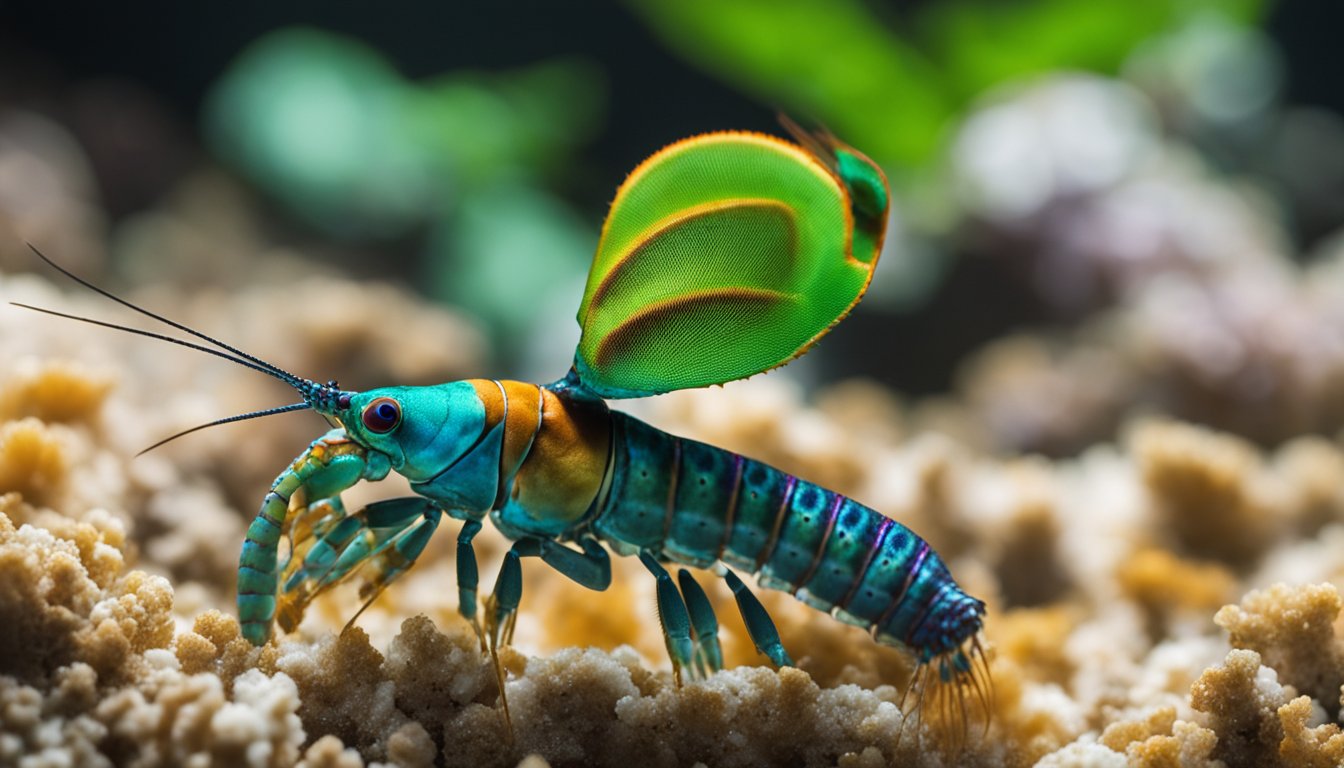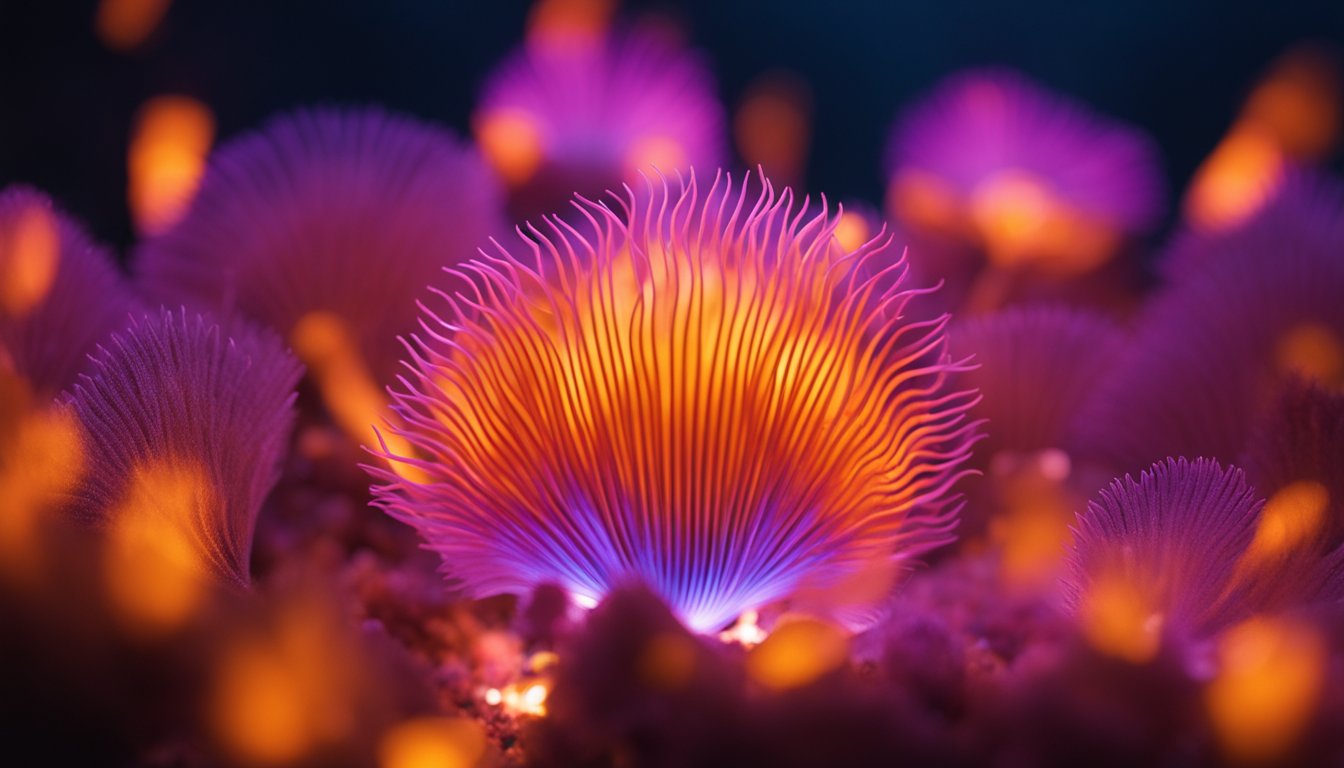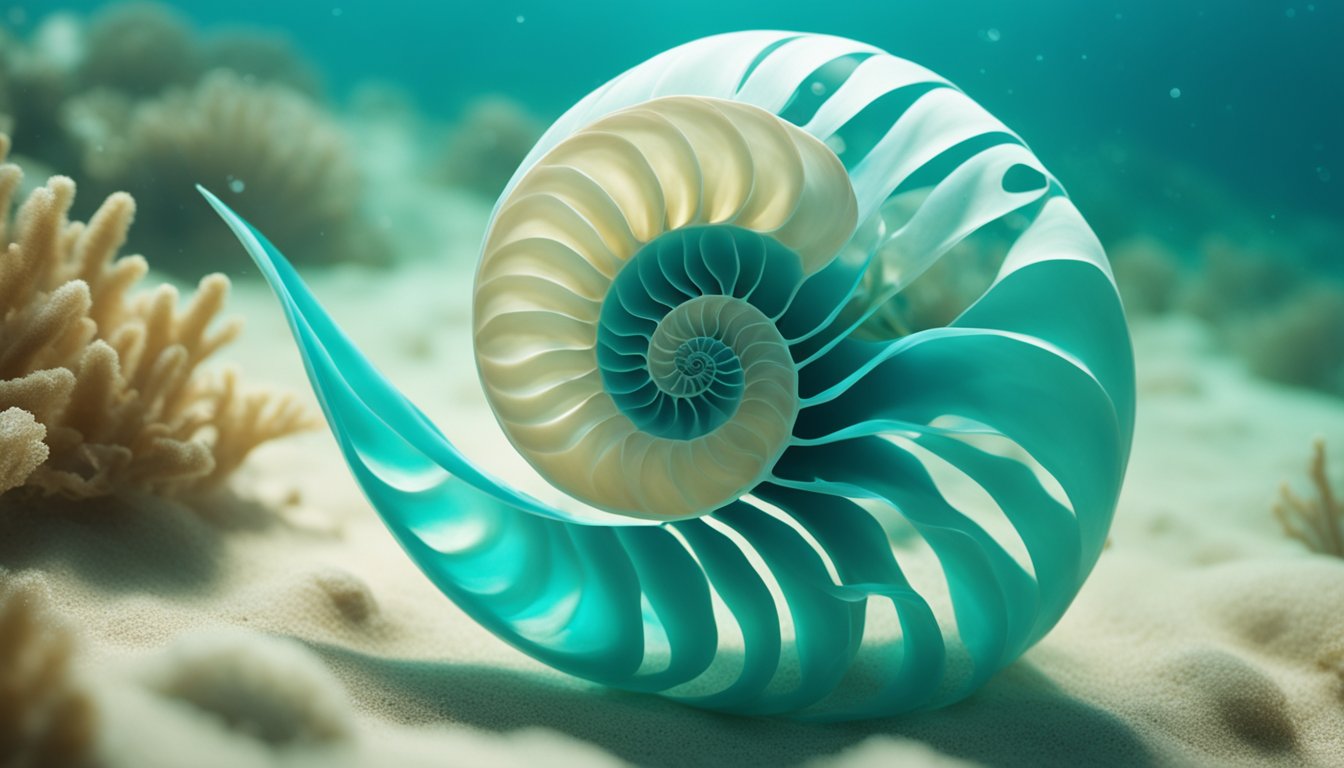When we wade into the coastal waters of the Pacific Northwest, we’re not just stepping into a vast, salty pool, but rather entering a world brimming with marine mysteries.
And there’s one creature that stands out not just for its odd name but also for its remarkable lifestyle—the geoduck.
The name might sound funny (pronounced “gooey-duck”), but this sea creature is one of the ocean’s most intriguing bivalves.
As we explore the story of the geoduck, we’re diving into a tale that stretches back millions of years and uncovers the secrets of one of the sea’s longest-living animals.

Geoducks are not your average clam. These giants can burrow up to three feet under the sea floor and grow to weigh more than a newborn human baby!
Imagine a clam that can tip the scales at over 15 pounds; that’s our remarkable geoduck.
On our journey learning about these creatures, we’ll find out how they can live to be over 100 years old, making them the Methuselahs of the clam world.
Our whimsical underwater friends have a way of sparking curiosity with their odd shape and impressive size.
While the geoduck’s long, elephant trunk-like siphon might seem peculiar, it’s this very feature that allows them to feast while staying snugly burrowed beneath the sand.
These gentle giants peacefully filter-feed, playing their part in the ocean’s complex food web.
As we get to know these incredible clams, we’ll understand our shared connection with the ocean’s tapestry of life.
The story of the geoduck helps us appreciate the fascinating web of relationships beneath the waves and our role in protecting the marine homes of such unique creatures.
As stewards of the sea, it’s up to us to ensure that the geoduck’s story continues for generations to come.
The Mystery of the Geoduck

The geoduck is not only a creature with a peculiar name but also one with a fascinating story.
Let’s take a closer look at this mysterious marine inhabitant.
Defining the Geoduck
Did you know that geoducks are not ducks at all?
Our name for them comes from a Native American word meaning “dig deep,” which is exactly what they do!
Geoducks (pronounced “gooey-duck”) are actually clams, but they are the largest burrowing clams in the world.
These incredible shellfish can live to be over 100 years old, making them among the longest-living animals on Earth, and can weigh more than two pounds!
Just imagine a clam as heavy as a pineapple!
Habitat and Range
These impressive creatures make their homes in the cool waters of the Pacific Northwest, stretching from Alaska to Baja California.
When we stroll along the sand, it’s unlikely that we’ll spot them because geoducks live deep underneath, often buried two to three feet in the sand.
Their habitats include both intertidal and subtidal zones up to 110 meters deep but are most commonly found in waters less than 30 meters deep.
The secret to their success is the symbiotic relationship with the sandy beds they inhabit, which provide them nourishment and safety.
Isn’t it amazing to think about these hidden giants, living their quiet lives beneath the waves, while we go about ours on land?
Growth and Longevity

When we think about the geoduck, imagine an underwater old-timer with a remarkable ability to grow and outlive most of its aquatic companions.
These fascinating creatures have a unique life journey that can span over a century!
Life Cycle
The life of a geoduck begins as a free-floating larva.
After spending several weeks in this stage, it settles onto the ocean floor and starts its life as a juvenile.
Over time, the geoduck buries itself in the sediment, leaving only its siphon visible above the surface.
It’s like our little friend’s version of building a fortress for protection.
Imagine having to grow into your home, settling in, and then living there for the rest of your life—that’s what it’s like for geoducks.
Age and Size
Now let’s talk about how old these clams can get and how big they can grow.
Imagine a tiny clam no bigger than a dime, slowly growing over the years, like a tree adding rings to its trunk.
Geoducks are the Methuselahs of the sea, often reaching 100 years or more! They’re not just old-timers; they are real record holders in the clam world.
By the time a geoduck is fully grown, it can reach up to three feet in length and weigh more than a gallon of milk!
Their sheer size and impressive age are big parts of what makes learning about geoducks so intriguing.
Isn’t it fascinating to think about these gentle giants living beneath the waves for so long?
Ecosystem Impact

As we wade into the fascinating story of the geoduck, let’s discover how this unique creature shapes the world beneath the waves and how our actions affect its life.
Role in the Environment
Imagine the seafloor as a bustling city, and in it, the geoduck plays a vital role like a farmer in the countryside.
These gentle giants filter the water, which keeps our underwater cities clean.
By doing this, they also become a key food source for other marine creatures, connecting different parts of our ocean’s ecosystem.
Isn’t it amazing how a single creature can matter so much?
Human Interactions
Have you ever admired a beautiful pearl necklace? Well, our interaction with geoducks isn’t about jewelry, but it’s no less valuable.
We’ve come to recognize geoducks for their taste, making them a top find for seafood lovers. But we have to be careful!
By taking too many geoducks from their homes, we might upset the balance of their ecosystem.
So we make efforts to harvest them sustainably, allowing us to enjoy their presence for generations to come.
Isn’t it wonderful how we can live in harmony with our planet’s amazing creatures?
Conservation and Challenges

When we explore the world of geoducks, it’s important for us to look at both the risks they face and the steps we’re taking to protect them.
Let’s dive into the details!
Threats to Geoducks
Even though geoducks might seem tough with their hefty size and ability to live for up to a century or more, they face some serious challenges.
Their cozy coastal homes are being threatened by overharvesting as geoduck clams are a delicacy, especially in Asia, leading to high demand.
Pollution is another problem—pollutants in the water can make their homes unsafe and unhealthy, affecting their growth and survival.
Climate change is like a dark cloud looming over our geoduck pals, causing changes in ocean temperatures and chemistry.
Imagine wearing a winter coat during summer—that’s how mixed up marine life can feel with these unpredictable changes happening in their ocean home!
Conservation Efforts
Here’s where we come together to champion the cause of these ocean giants!
To ensure geoducks stick around for future generations, marine conservationists are hard at work.
Regulations have been put in place, including setting limits on how many geoducks can be harvested—from both wild populations and farms.
We’re also doing a fantastic job with habitat restoration.
This means we’re cleaning up the beaches and seabeds, planting seagrass, and making sure the shoreline is pristine and welcoming for baby geoducks to burrow down and call home.
Moreover, researchers are keeping a close eye on geoduck populations, using cool gadgets and doing experiments to understand how these clams react to different environmental conditions.
It’s a bit like being a detective, but for the sake of our geoduck friends, we’re delving into marine mysteries!
We can all play a part, too!
By being mindful of where our seafood comes from and choosing sustainable options, we’re sending a strong message that we care about geoduck conservation.
Isn’t it awesome to think that every one of us can be a hero for the giant clams of the sea?
Exploring Geoduck Cuisine
Geoducks might look a bit odd, but they sure are a treat in many parts of the world.
Let’s dive into the mouth-watering ways geoducks make their way to our plates from global recipes to tips on how to prepare them.
Global Culinary Delight
Did you know that in different corners of the globe, our friend the geoduck is a real culinary star?
From Asia to North America, people love this large clam for its sweet, crisp taste and crunchy texture.
In Japan, it often appears thinly sliced as sashimi, sometimes served with a splash of soy sauce and a dab of wasabi.
Across the ocean in America, we love to chop it up into hearty chowders or savory sautes.
It’s fascinating how one creature can be a centerpiece in such a variety of dishes!
Preparation and Recipes
Now, preparing a geoduck might seem a bit daunting, but don’t worry, we’ve got some tips to make it as easy as pie.
First, we have to separate the clam from its shell, then clean it thoroughly.
Remember, the siphon and meat have different textures and can be cooked separately.
The body meat is perfect for chowders or stews, while that crunchy siphon shines in quick, high-heat recipes like stir-fries or pan sears.
And if you’re feeling bold, how about trying geoduck ceviche? Just dice it up, marinate with lime juice, sprinkle with fresh cilantro, and voila!
Frequently Asked Questions
Let’s explore some curious questions about the mighty geoduck that pop up quite often.
We’ll learn about their cost, natural habitat, dining experience, size records, quirky name origin, and how to enjoy them safely.
How much do geoducks cost, and what factors influence their price?
Geoduck clams boast a hefty price tag, often selling for upwards of $100 per pound.
This cost can fluctuate based on availability, size, and demand, especially in Asian cuisine where they’re a delicacy.
You see, geoducks aren’t the easiest to harvest; their deep burrows and long lifespans make them a rare catch, which pumps up the price!
In which habitats can the giant geoduck clam typically be found?
Finding a geoduck in the wild is like discovering underwater treasure! These giants favor the sandy or muddy ocean floors of the coastal Pacific Northwest.
Burrowed at depths of up to several feet, the geoduck requires cold waters ranging from British Columbia down to California.
What’s the experience like when eating a geoduck clam, and how is it prepared?
Eating a geoduck is an adventure of its own! The texture is surprisingly crunchy, and the flavor has a sweet, fresh ocean breeze essence.
Chefs often serve them raw, sashimi style, or lightly blanched to dip in vibrant sauces.
Preparing these clams can be fun; with a quick boil, their shells pop open, and voilà, they’re ready for a taste test.
What’s the record for the largest geoduck ever found, and how big can they grow?
Imagine a clam as big as a basketball – that’s how large geoducks can get!
The largest on record tipped the scales at over 15 pounds with a neck, or siphon, over 3 feet long.
These gentle giants aren’t just large; they’re also some of the longest-living animals, with lifespans of over 100 years!
Why do people say ‘gooey duck’ when talking about geoducks, and where does this name come from?
The name ‘geoduck’ sure is a funny one, isn’t it? It sounds like “gooey duck,” but there aren’t any feathers here!
This name comes from a Native American word, meaning “dig deep,” which makes sense since they nestle so far down in the sea floor.
Despite sounding a bit gooey, the name reflects their remarkable lifestyle.
Can you safely enjoy geoduck in its raw form, and are there health considerations?
Yes, we can absolutely savor geoduck raw – it’s delectable that way!
Just like with any shellfish, make sure it comes from clean waters and is handled properly. Eating raw geoduck is safe when you buy from reputable sources.
Remember, freshness is key, and always check for any allergies to shellfish before diving in!




